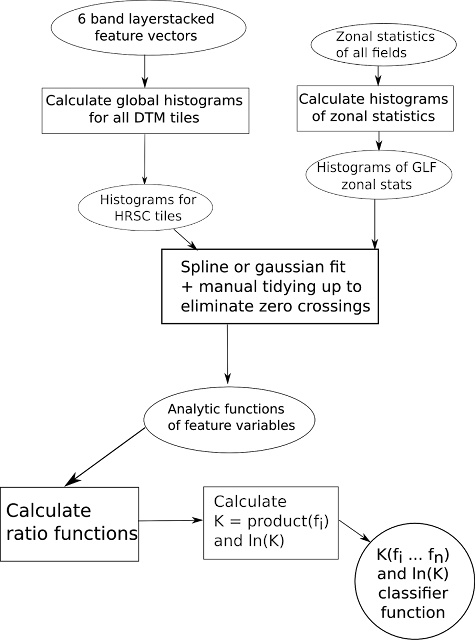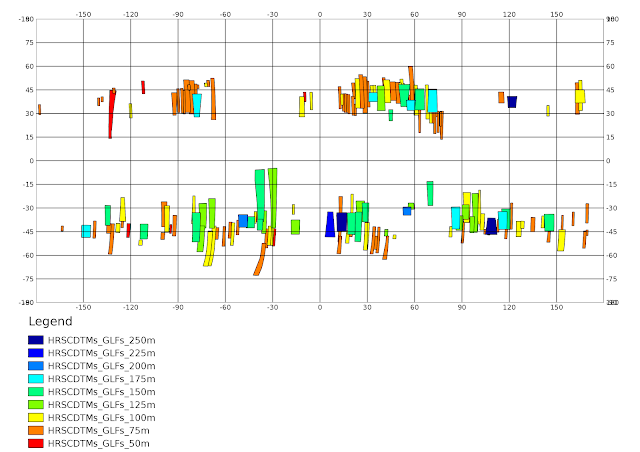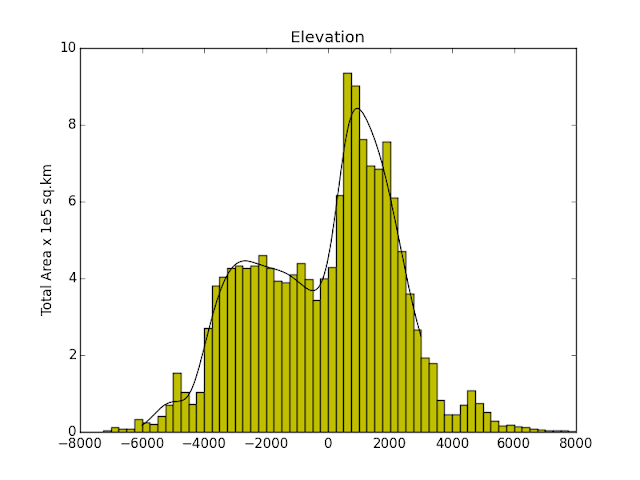The Bayesian classifier function in the dissertation - Part 4: Constructing and evaulating the classifier
Tags: dissertationMars07 Jan 2016 - MawKernewek
 |
Histograms for zonal statistics for 'extent' shapefile polygons:

Histograms for all of the HRSC tile area:
I made a 4 component gaussian fit to these, and then had analytic functions of feature variables, and then made ratios of the zonal/global as functions of the feature vector.
| Slopes of 10-20° are favoured. |
| Both longitudinal and cross-sectional curvature is favoured to be negative, ie. concave slopes within hollows. |
I defined the classifier function K as the product of all of these (excluding NDR since it was locally normalised in the HRSC data), and used ln(K) in my interpretation, and in the dissertation made a basic z-test showing the classifier was better than random at predicting the glaciers locations, but looking at a number of fields, it was clear the classifier was not specific to the particular type of object Souness catalogued, but perhaps could be useful as a search tool.







